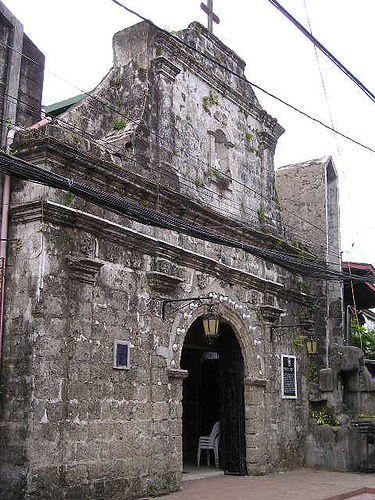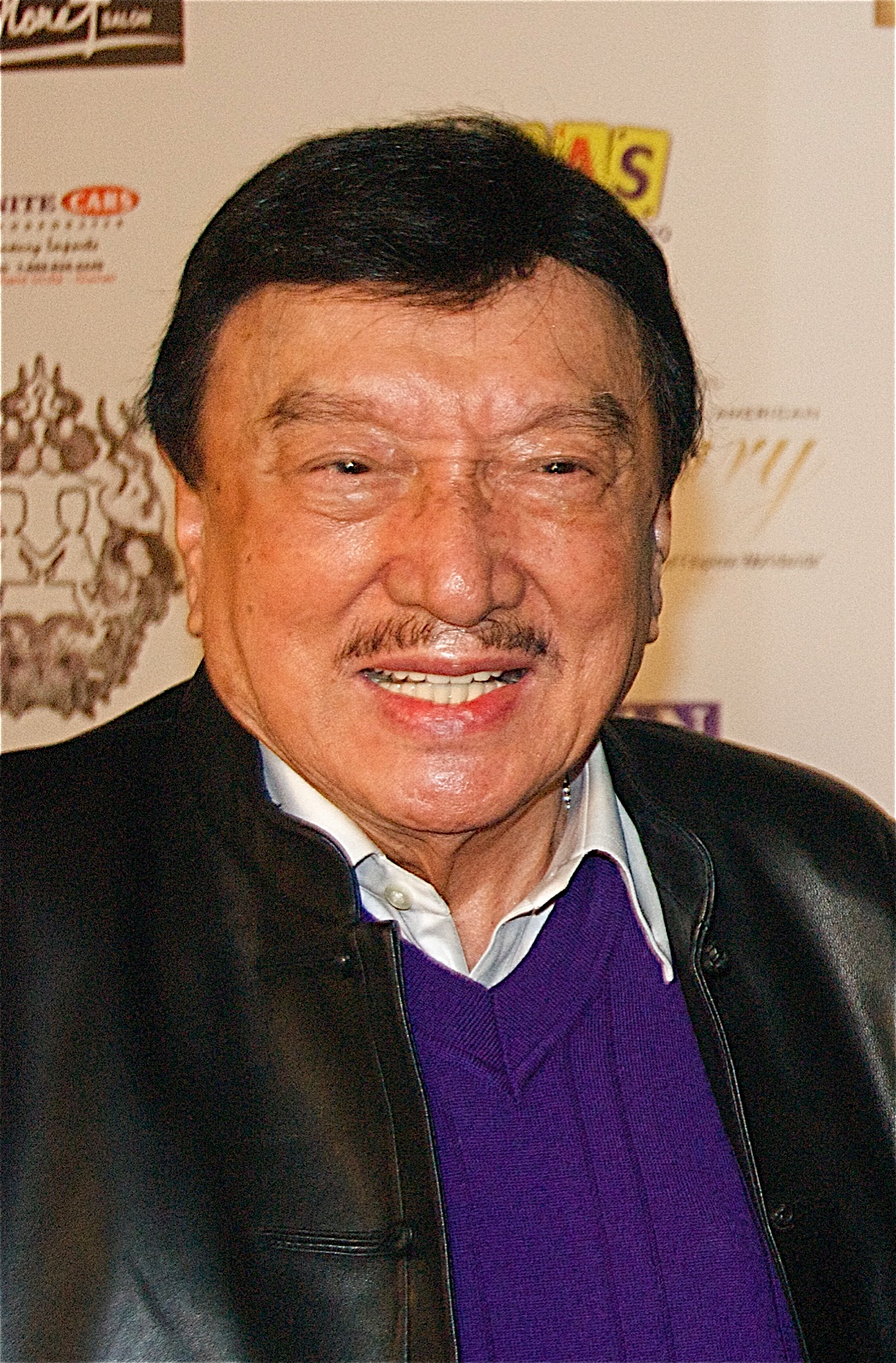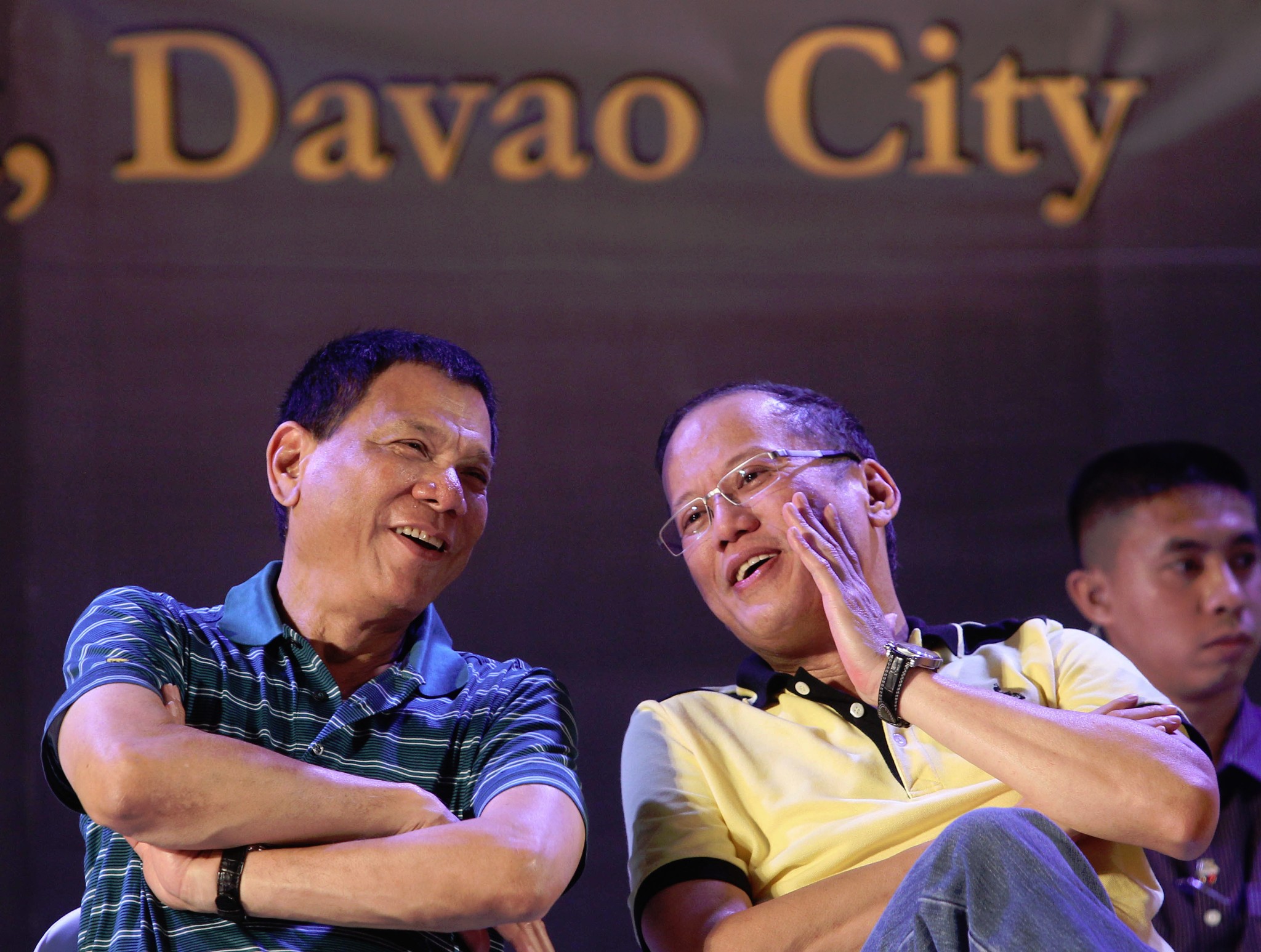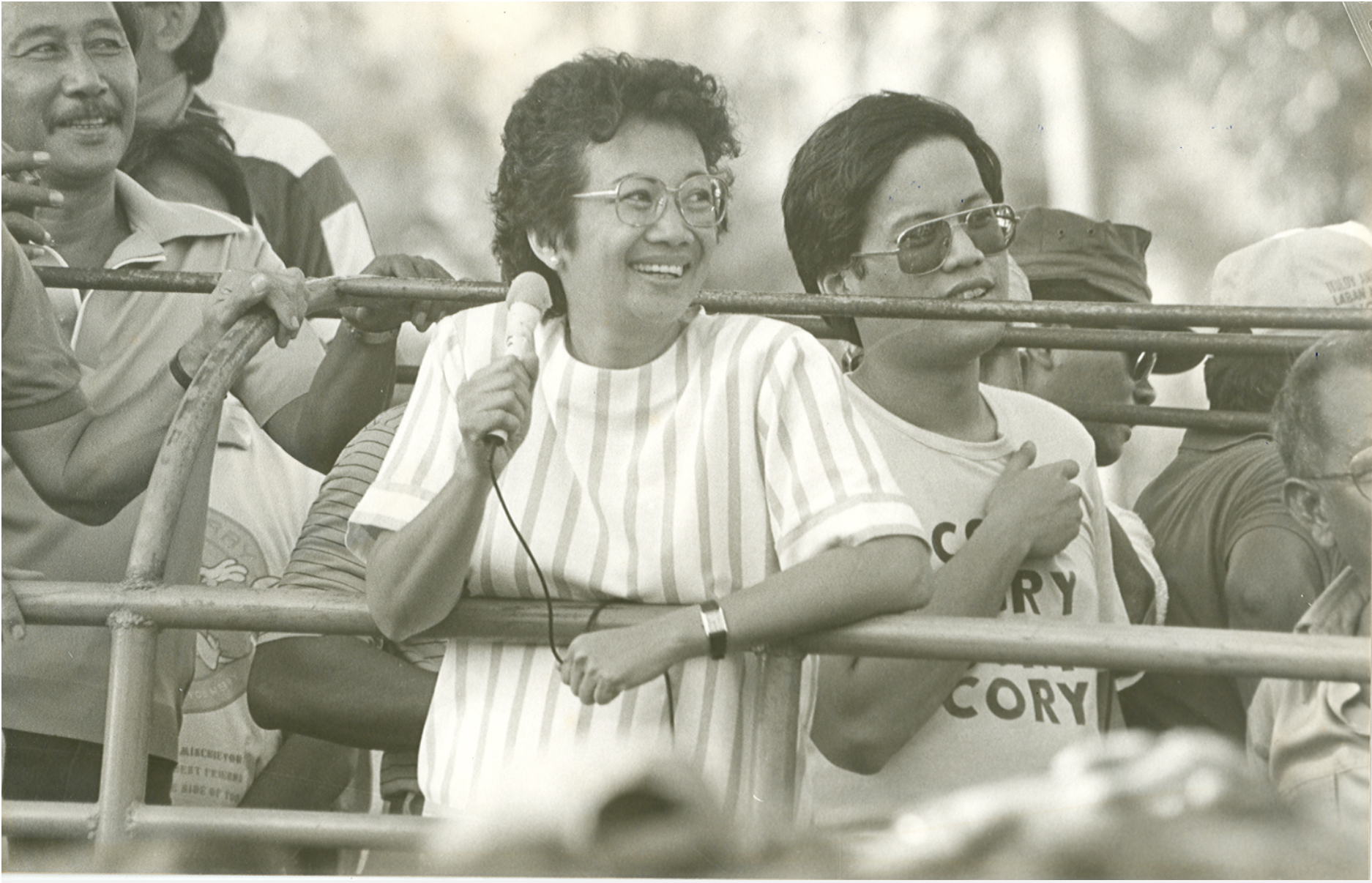|
Willie Nepomuceno
Willie Nepomuceno (born July 8, 1948), is a Filipino impersonator, satirist, and best known for his impersonation of political personalities, especially Philippine presidents such as Ferdinand Marcos, Fidel V. Ramos, Joseph Estrada, Benigno Aquino III and Rodrigo Duterte. Personal life In 2014, Nepomuceno's then 16-year-old grandson Sean Gabriel was shot and injured in Marikina City. Discography Studio albums *''Ako Ay Ikaw Rin'' *''Willie's Way'' (1984) *''Snap Revolution: The Untold Story of People Power'' (1987) *''Menemis Willie Nep'' (1991) *''Willie Nep for President (Vote One, Take All)'' *''Love Album'' (2005) Singles *"Opisina" / "Blueseal" (1991) *"Grabeng Traffic" (1992) See also *Comedy in the Philippines *Martial Law under Ferdinand Marcos At 7:17 pm on September 23, 1972, President Ferdinand Marcos announced on television that he had placed the entirety of the Philippines under martial law. This marked the beginning of a 14-year period of one-man rule that wou ... [...More Info...] [...Related Items...] OR: [Wikipedia] [Google] [Baidu] |
Brackets
A bracket is either of two tall fore- or back-facing punctuation marks commonly used to isolate a segment of text or data from its surroundings. Typically deployed in symmetric pairs, an individual bracket may be identified as a 'left' or 'right' bracket or, alternatively, an "opening bracket" or "closing bracket", respectively, depending on the Writing system#Directionality, directionality of the context. Specific forms of the mark include parentheses (also called "rounded brackets"), square brackets, curly brackets (also called 'braces'), and angle brackets (also called 'chevrons'), as well as various less common pairs of symbols. As well as signifying the overall class of punctuation, the word "bracket" is commonly used to refer to a specific form of bracket, which varies from region to region. In most English-speaking countries, an unqualified word "bracket" refers to the parenthesis (round bracket); in the United States, the square bracket. Glossary of mathematical sym ... [...More Info...] [...Related Items...] OR: [Wikipedia] [Google] [Baidu] |
Marikina City
Marikina (), officially the City of Marikina ( fil, Lungsod ng Marikina), is a 1st class Cities of the Philippines#Legal classification, highly urbanized city in the Metro Manila, National Capital Region of the Philippines. According to the 2020 census, it has a population of 456,159 people. It is located along the eastern border of Metro Manila, Marikina is the main gateway of Metro Manila to Rizal and Quezon (province), Quezon provinces through Marikina–Infanta Highway. It is bordered on the west by Quezon City, to the south by Pasig and Cainta, Rizal, Cainta, to the north by San Mateo, Rizal, San Mateo, and to the east by Antipolo, the capital of Rizal province. It was founded by the Society of Jesus, Jesuits on the fertile Marikina Valley in 1630. Marikina was the provincial capital of the Manila (province), Province of Manila under the First Philippine Republic from 1898 to 1899 during the Philippine Revolution. Following the onset of History of the Philippines (1898-194 ... [...More Info...] [...Related Items...] OR: [Wikipedia] [Google] [Baidu] |
Filipino Male Comedians
Filipino may refer to: * Something from or related to the Philippines ** Filipino language, standardized variety of 'Tagalog', the national language and one of the official languages of the Philippines. ** Filipinos, people who are citizens of the Philippines or are of Filipino descent. Other uses * Filipinos (snack food), branded cookies manufactured in Europe See also * * * Filipinas (other) Filipinas may refer to: * ''Filipinas, letra para la marcha nacional'', the Spanish poem by José Palma that eventually became the Filipino national anthem. * The original Spanish name, and also used in different Philippines languages including F ... {{disambiguation Language and nationality disambiguation pages ... [...More Info...] [...Related Items...] OR: [Wikipedia] [Google] [Baidu] |
Living People
Related categories * :Year of birth missing (living people) / :Year of birth unknown * :Date of birth missing (living people) / :Date of birth unknown * :Place of birth missing (living people) / :Place of birth unknown * :Year of death missing / :Year of death unknown * :Date of death missing / :Date of death unknown * :Place of death missing / :Place of death unknown * :Missing middle or first names See also * :Dead people * :Template:L, which generates this category or death years, and birth year and sort keys. : {{DEFAULTSORT:Living people 21st-century people People by status ... [...More Info...] [...Related Items...] OR: [Wikipedia] [Google] [Baidu] |
Sic O' Clock News
''Sic O'Clock News'' was a Philippine political satire news and comedy show which aired on IBC 13 from January 4, 1987, to September 15, 1990. Cast * Jimmy Fabregas as Sonny Esguerra (1987-1990) *Ces Quesada as Lilian Polly Catubusan Labaybay (1987-1990) *Hero Bautista (1988) *Rene Requiestas (1987-1989) *Junix Inocian (1988) *Lou Veloso (1988) *Manny Castañeda *Joji Isla *Wilson Go *Jon Achaval *Ching Arellano *Pen Medina *Errol Dionisio *Celeste Bueno *Dina Padilla * Khryss Adalia *Nonoy Oplas (1989-1990) *Nonie Buencamino (1989-1990) * Domeng Landicho (1989-1990) Characters Re-runs Reruns of the series was aired on IBC from February 11 to July 19, 2019. Clips from the series was shown on IBC's archival program ''Retro TV'' in 2003. See also *List of programs previously broadcast by Intercontinental Broadcasting Corporation *May Tamang Balita ''May Tamang Balita'' () formally ''May Tamang Balita atbp.'' is a Philippine television news satire show broadcast by GMA News ... [...More Info...] [...Related Items...] OR: [Wikipedia] [Google] [Baidu] |
Martial Law Under Ferdinand Marcos
At 7:17 pm on September 23, 1972, President Ferdinand Marcos announced on television that he had placed the entirety of the Philippines under martial law. This marked the beginning of a 14-year period of one-man rule that would effectively last until Marcos was exiled from the country on February 25, 1986. Even though the formal document proclaiming martial law – Proclamation No. 1081, which was dated September 21, 1972 – was formally lifted on January 17, 1981, Marcos retained essentially all of his powers as dictator until he was ousted. While the period of Philippine history in which Marcos was in power actually began seven years earlier, when he was first inaugurated president of the Philippines in late 1965, this article deals specifically with the period where he exercised dictatorial powers under martial law, and the period in which he continued to wield those powers despite technically lifting the proclamation of martial law in 1981. When he declared martial law in ... [...More Info...] [...Related Items...] OR: [Wikipedia] [Google] [Baidu] |
Comedy In The Philippines
Comedy in the Philippines has had a significant presence in Philippine culture for as long as Filipinos have had mediums of entertainment, and has transformed to reflect changing Filipino life. Although there are very few contemporaneous descriptions of early Philippine performance arts, the prominent use of humor is evident in documented folkloric forms as the salawikain (proverb), and oral epics such as '' Biag ni Lam-ang''. Oral epics notably contain prominent instances of physical humor, such as the incident of Lam-ang's bath in the Amburayan river. The colonial era saw the introduction of new forms of entertainment, which included comedic performances in these new formats. The Spanish introduced the comedic anti-Muslim propaganda play called the " Moro-moro" and the tragicomic three-act play known as the '' Comedia''. The American occupation and the industrial age brought new forms such as cinema and the Bodabil show. Political satire has played an important role in Phili ... [...More Info...] [...Related Items...] OR: [Wikipedia] [Google] [Baidu] |
Manila Standard
The ''Manila Standard'' is a broadsheet newspaper in the Philippines. , it is owned by the Romualdez family. The Romualdezes, through incumbent speaker of the House Martin Romualdez, also own Journal Publications, Inc., the owner of tabloid papers ''People's Journal'' and ''People's Tonight''. Initially established as the ''Manila Standard'' in 1987, it merged with another newspaper, ''Today'', on March 6, 2005, and became the ''Manila Standard Today'' (MST). In 2015, the newspaper renamed itself as ''The Standard'' (temporarily ''The New Standard''), before reverting to its original name in 2016. History The ''Manila Standard'' was founded on February 11, 1987. The offices were then located at the bustling Ayala Avenue in the Makati CBD. In 1989, the group of Andres Soriano III bought out the Elizalde group and renamed the company Kagitingan Publications and relocated the offices in the Port Area, Manila. In June 1991, the group of businessman Alfonso Yuchengco bought int ... [...More Info...] [...Related Items...] OR: [Wikipedia] [Google] [Baidu] |
Philippine Daily Inquirer
The ''Philippine Daily Inquirer'' (''PDI''), or simply the ''Inquirer'', is an English-language newspaper in the Philippines. Founded in 1985, it is often regarded as the Philippines' newspaper of record. The newspaper is the most awarded broadsheet in the Philippines and the multimedia group, called The Inquirer Group, reaches 54 million people across several platforms. History The ''Philippine Daily Inquirer'' was founded on December 9, 1985, by publisher Eugenia Apóstol, columnist Max Solivén, together with Betty Go-Belmonte during the last days of the regime of President Ferdinand Marcos, becoming one of the first private newspapers to be established under the Marcos regime. The ''Inquirer'' succeeded the weekly ''Philippine Inquirer'', created in 1985 by Apostol to cover the trial of 25 soldiers accused of complicity in the assassination of opposition leader Ninoy Aquino at Manila International Airport on August 21, 1983. Apostol also published the '' Mr. & Ms. Spec ... [...More Info...] [...Related Items...] OR: [Wikipedia] [Google] [Baidu] |
Filipino People
Filipinos ( tl, Mga Pilipino) are the people who are citizens of or native to the Philippines. The majority of Filipinos today come from various Austronesian ethnolinguistic groups, all typically speaking either Filipino, English and/or other Philippine languages. Currently, there are more than 185 ethnolinguistic groups in the Philippines; each with its own language, identity, culture and history. Names The name ''Filipino'', as a demonym, was derived from the term ''Las Islas Filipinas'' ("the Philippine Islands"), the name given to the archipelago in 1543 by the Spanish explorer and Dominican priest Ruy López de Villalobos, in honor of Philip II of Spain (Spanish: ''Felipe II''). During the Spanish colonial period, natives of the Philippine islands were usually known by the generic terms ''indio'' ("Indian") or ''indigenta'' ("indigents"). However, during the early Spanish colonial period the term ''Filipinos'' or ''Philipinos'' was sometimes used by Spanish writers ... [...More Info...] [...Related Items...] OR: [Wikipedia] [Google] [Baidu] |
Rodrigo Duterte
Rodrigo Roa Duterte (, ; born March 28, 1945), also known as Digong, Rody, and by the initials DU30 and PRRD, is a Filipino lawyer and politician who served as the 16th president of the Philippines from 2016 to 2022. He is the chairperson of PDP–Laban, the ruling political party in the Philippines during his presidency. Duterte is the first president of the Philippines to be from Mindanao, and is the oldest person to assume office, beginning his term at age 71. Born in Maasin, Leyte (now in Southern Leyte), Duterte moved to Davao as a child where his father, Vicente Duterte, served as provincial governor. He studied political science at the Lyceum of the Philippines University, graduating in 1968, before obtaining a law degree from San Beda College of Law in 1972. He then worked as a lawyer and was a prosecutor for Davao City, before becoming vice mayor and, subsequently, mayor of the city in the wake of the 1986 People Power Revolution. Duterte won seven terms and s ... [...More Info...] [...Related Items...] OR: [Wikipedia] [Google] [Baidu] |
Benigno Aquino III
Benigno Simeon Cojuangco Aquino III (; February 8, 1960 – June 24, 2021), also known as Noynoy Aquino and colloquially as PNoy, was a Filipino politician who served as the 15th president of the Philippines from 2010 to 2016. The son of assassinated politician Benigno Aquino Jr. and 11th president Corazon Aquino, he was a fourth-generation politician as part of the Aquino family of Tarlac. Benigno Aquino III previously served as a member of the House of Representatives and Senate from 1998 to 2010, and also as a deputy speaker of the House of Representatives from 2004 to 2006. On September 9, 2009, shortly after the death of his mother, he announced his candidacy in the 2010 presidential election, which he eventually won. He was sworn into office as the 15th president of the Philippines on June 30, 2010, succeeding Gloria Macapagal Arroyo. [...More Info...] [...Related Items...] OR: [Wikipedia] [Google] [Baidu] |





